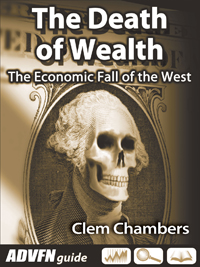Buffett, as a director of Washington Post was able to share his insights on good managerial practice. Today’s Newsletter considers some of his contributions to shaping the company.

Share buy-backs
One thing he pressed for was share repurchases. He persuaded the board that when the price is low enough it makes great sense for your company to buy its own shares from the market. That way, earnings per share can rise, lifting the value of each remaining share: the discounted future annual owner earnings are split between fewer shares increasing the present value.
This happens when the share is selling below intrinsic value, when conservatively calculated. The company must have the funds available either in cash or through sensible borrowing, that would not otherwise be needed for investment within the business in value creating projects.
Over the years, about half of Washington Post’s shares were repurchased. As a result Berkshire Hathaway ownership share rose from 10% in 1973 to over 18% without it buying anymore.
Takeovers and start-ups
He also restrained the board from paying high prices in bidding wars for hot media assets – it is simply not necessary to keep up with the Jones’s when excitement for newspaper titles, TV or cable franchises is feverish. It’s better to keep hold of your cash.
This parsimony, and Buffett’s hold over Katherine Graham, frustrated many of the more expansionist senior managers and directors. New ideas and start-up ventures were not what the Washington Post Company was all about in Buffett’s eyes. He saw it as low-risk producer of a flow of owner earnings from its base of solid and enduring business franchises, and not a vehicle for speculating on a new-fangled idea that might just work,…or might not.
Even if the media and tech guys thought something was very promising, e.g. a 24-hour news channel, he was cautious if he felt it was outside his circle of competence, and even more cautious if he thought it outside the management’s circle of competence.
Opportunities were undoubtedly missed, but nevertheless the returns on capital within the Washington Post Company’s various businesses were high, and this meant that the returns on the shares were excellent. And they could be obtained without the fear of backing the wrong horse and losing it all in the game of speculation about the future.
Buffett is very keen on companies sticking to those business areas where they have a distinct competitive advantage, giving pricing power and high returns on capital. Any surplus capital generated by a company should only be retained to invest in new schemes if there is reasonably certainty that it can generate a satisfactory rate of return for each dollar put in; the rest should flow to shareholders to place elsewhere.
Growth in size as measured by turnover, market capitalisation or profits, is not the goal; high return on capital is.
This mind-set meant that over the next few decades the Washington Post Company strayed very little from the form and structure that Buffett found it in when he started buying. It tried out a few ideas such as a sports magazine, but this was small beer relative to the original franchises of Washington Post, Newsweek and the collection of television stations, which continued to account for the bulk of the profits.
An Inevitable
He described The Washington Post as an Inevitable. These are best type of firms to own (but only if you can buy at the right price!) because they dominate their industries or segments of their industries, such as Washington DC. More importantly, they can reasonably……….To read the rest of this article, and more like it, subscribe to my premium newsletter Deep Value Shares – click here http://newsletters.advfn.com/deepvalueshares/subscribe-1


 Hot Features
Hot Features













